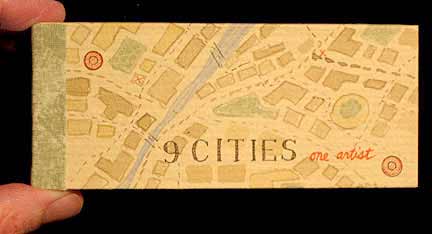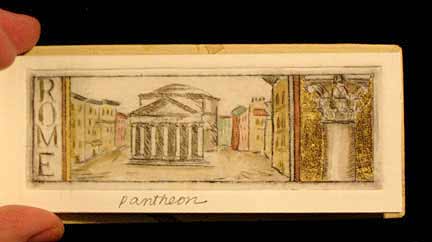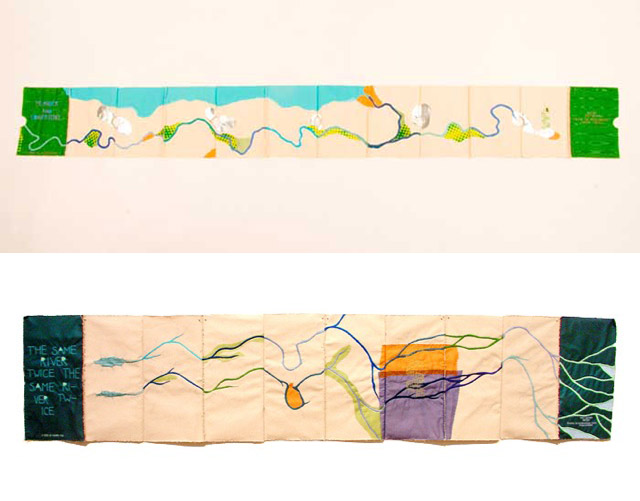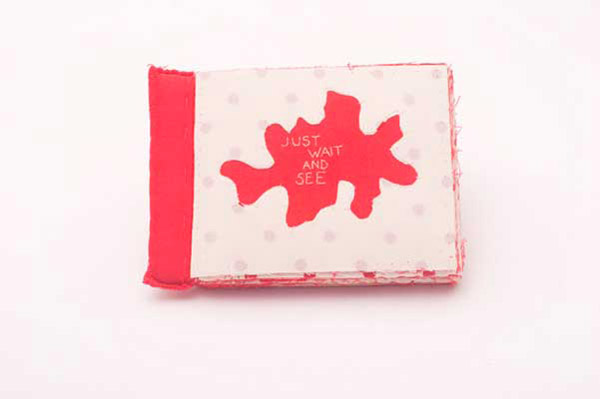In 2009, Laura Davidson took inspiration from the cities that she visited and created 9 Cities, One Artist in a small edition of 7. Each hand colored dry point print depicts a monument from each respective city and includes a handwritten caption naming the buildings. The beautiful, muted color palette is a lovely contrast against the vibrant 22 c. gold details. There are 10 prints in total.
The book is on a smaller, more intimate scale measuring 2″ high by 4½” long.
A few words from Laura regarding her work:
I love to travel and have been so inspired by it. I think it is good to get out of the studio and look at what is out there and what can inspire.







































